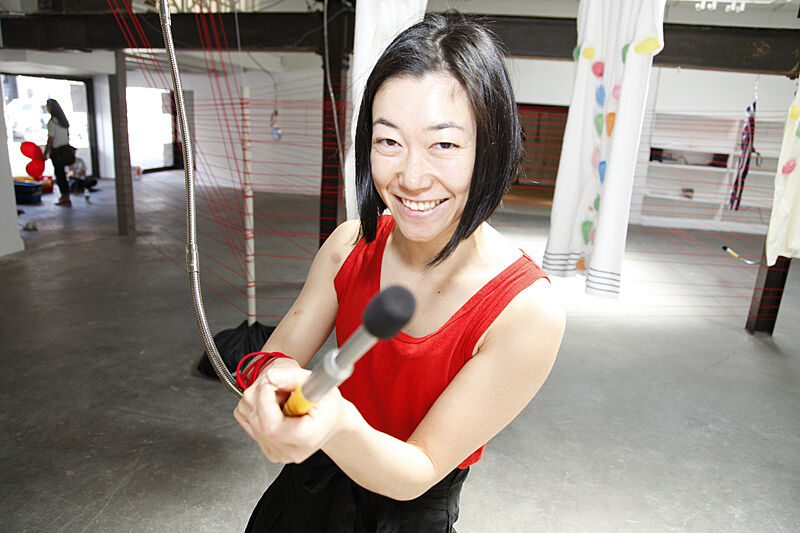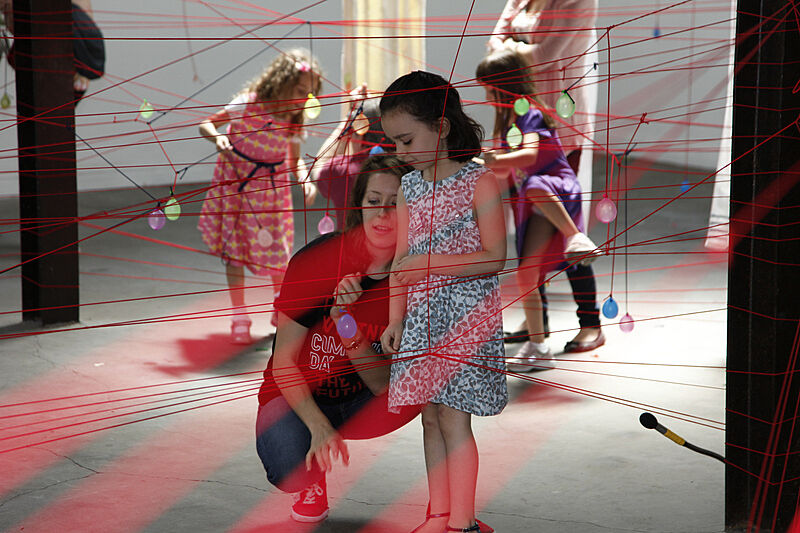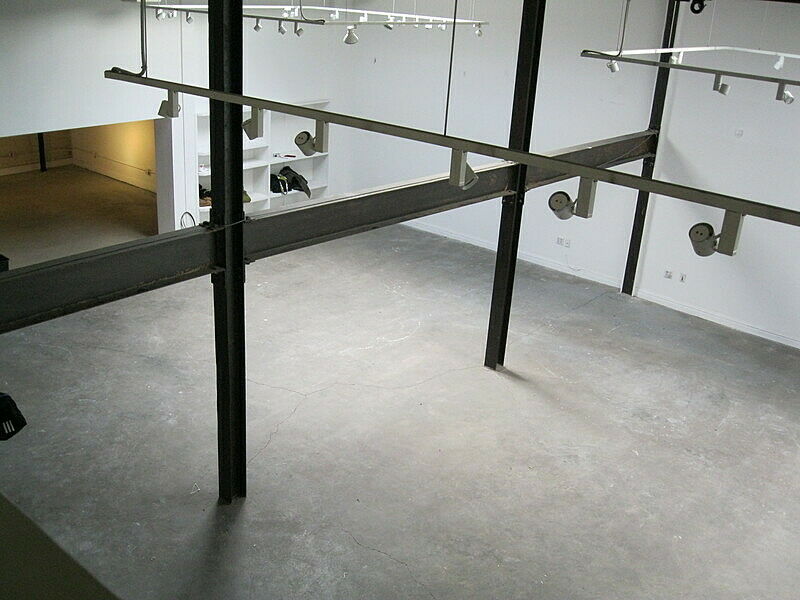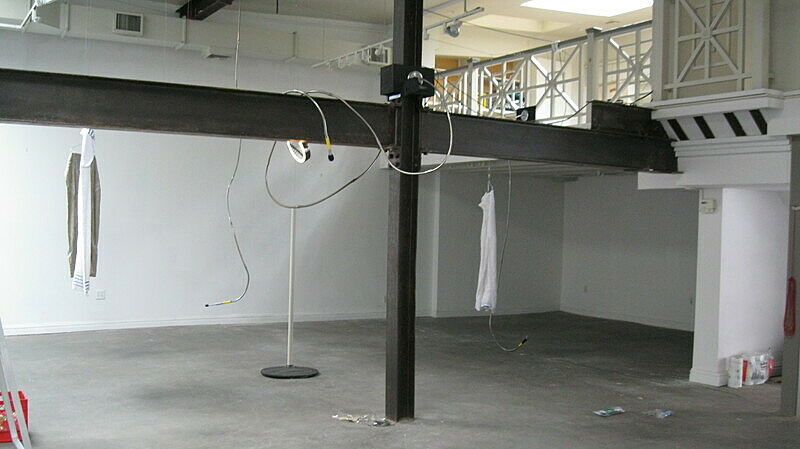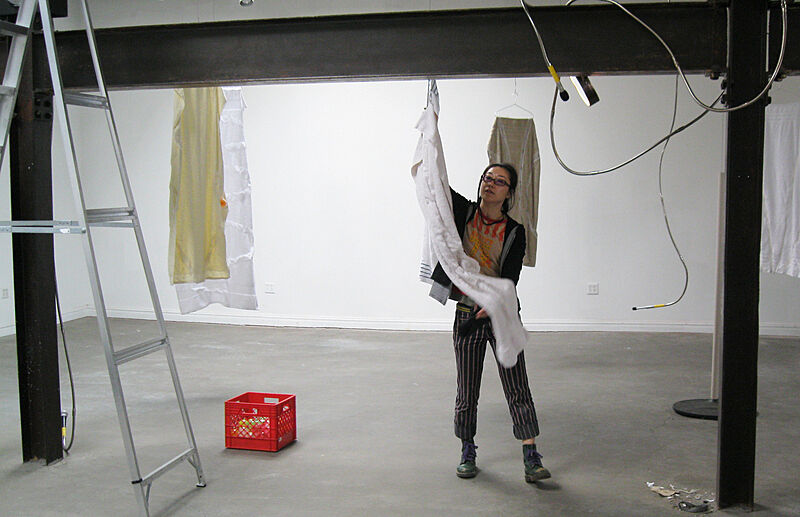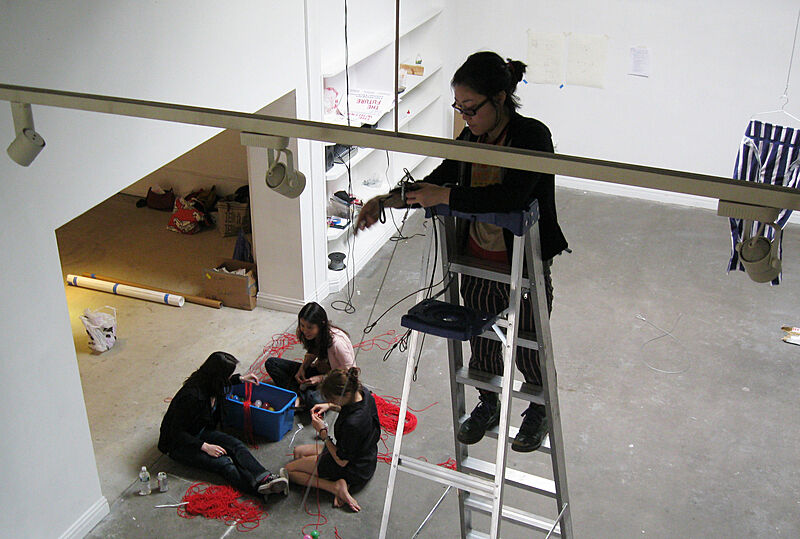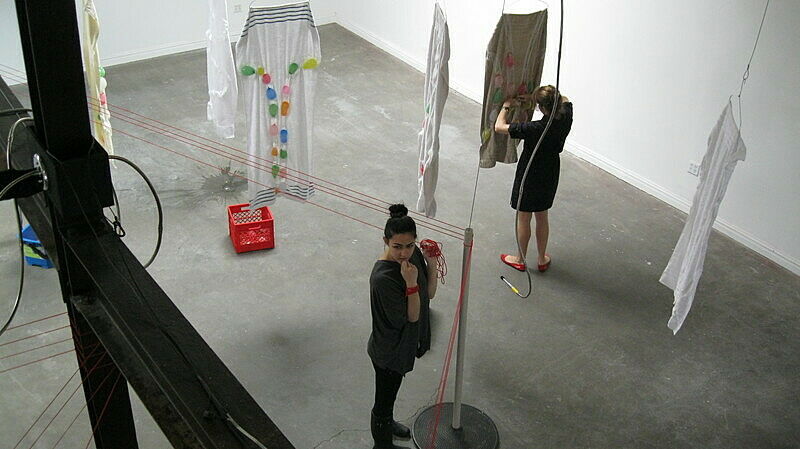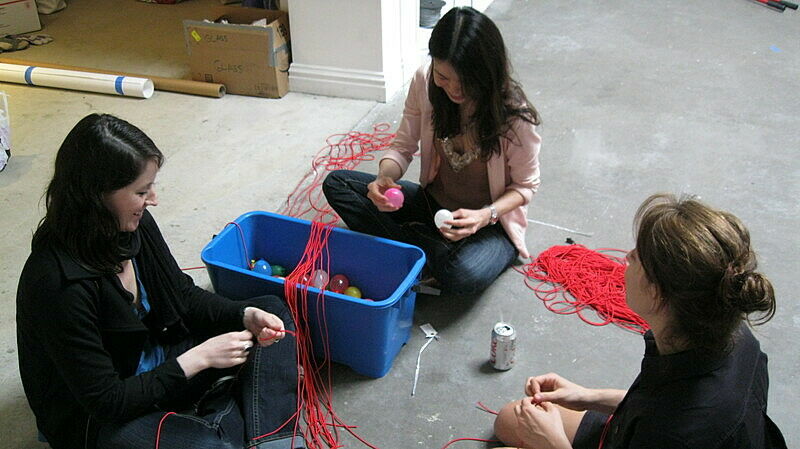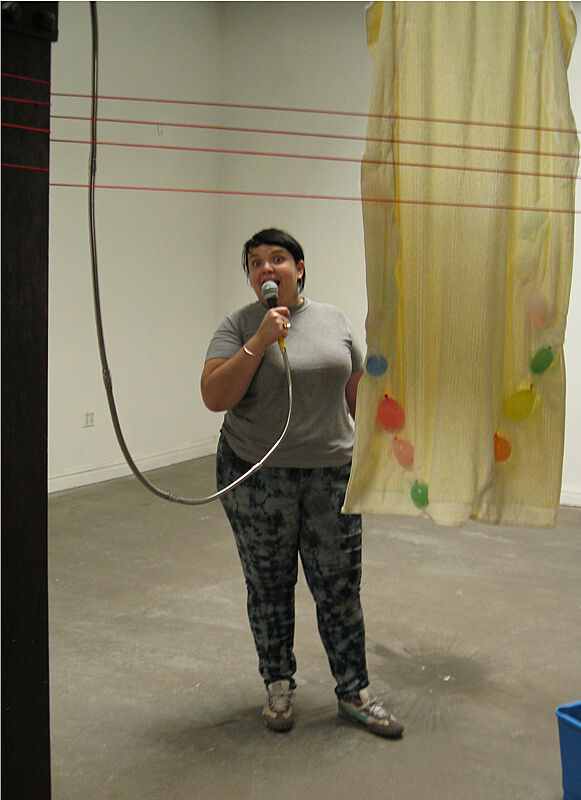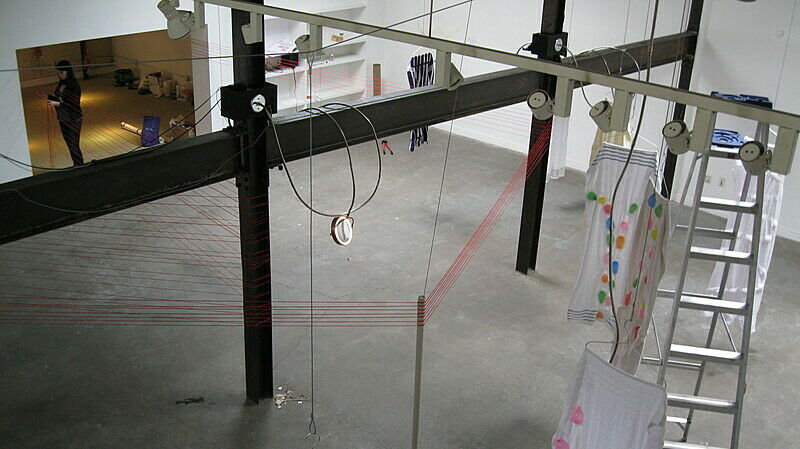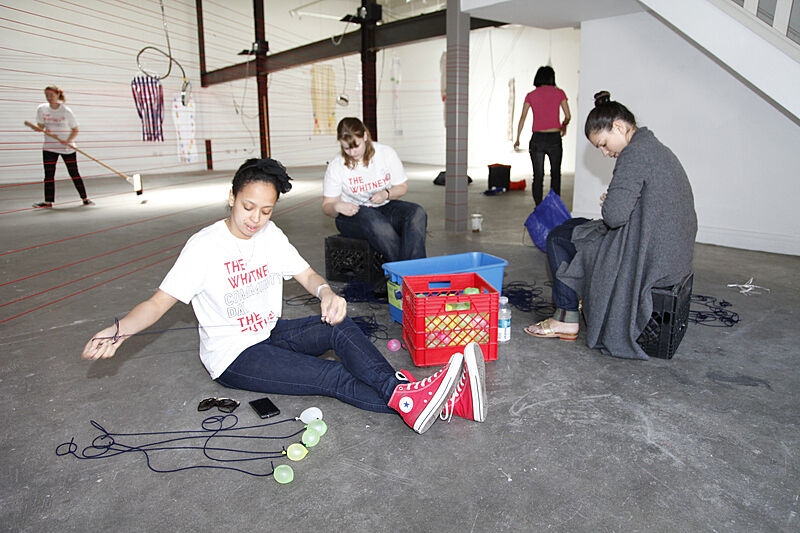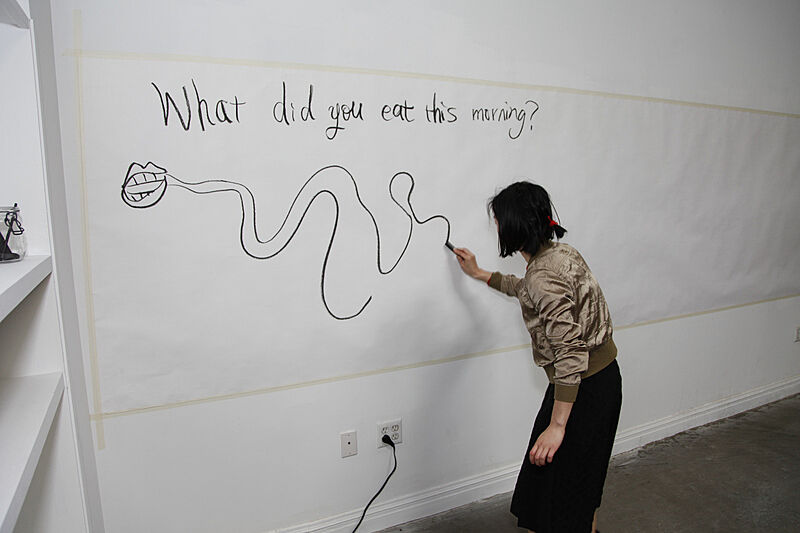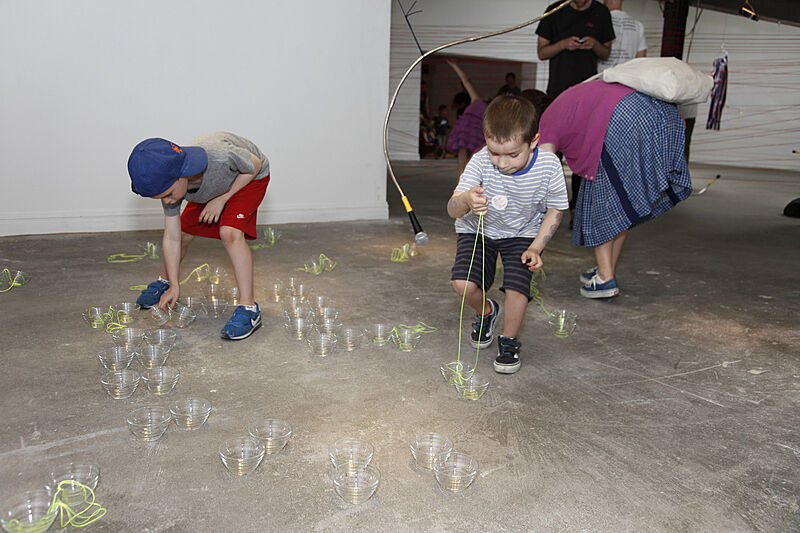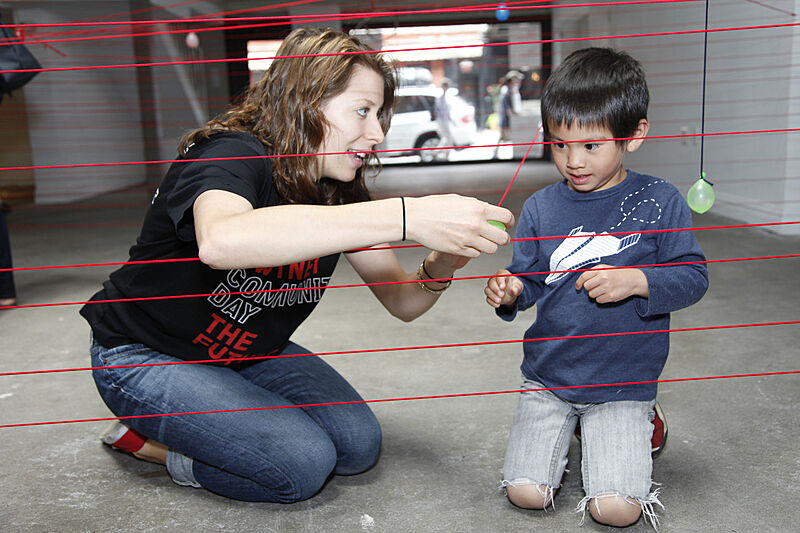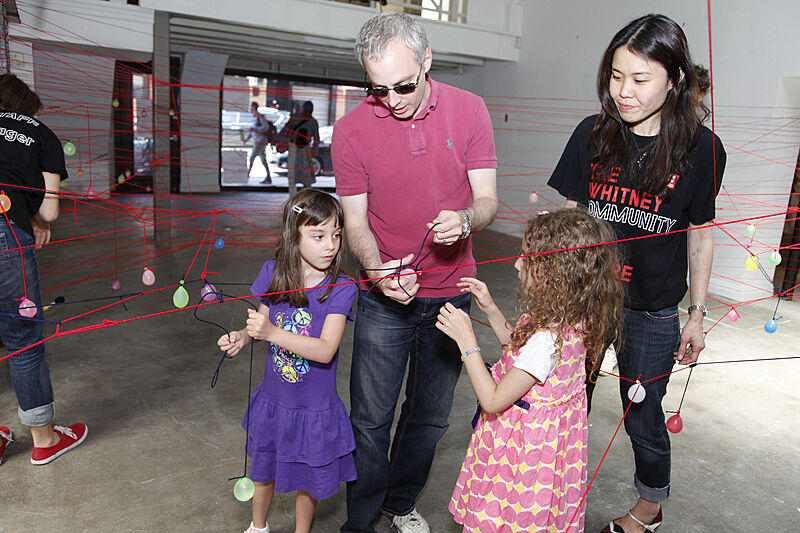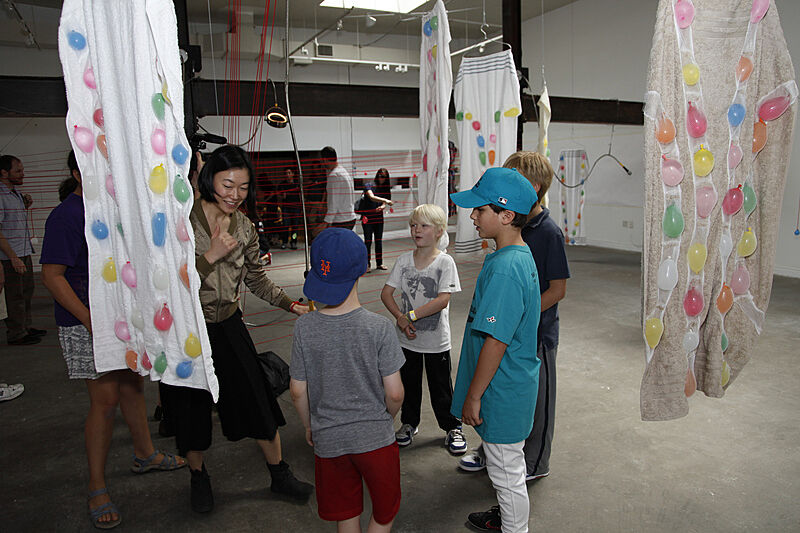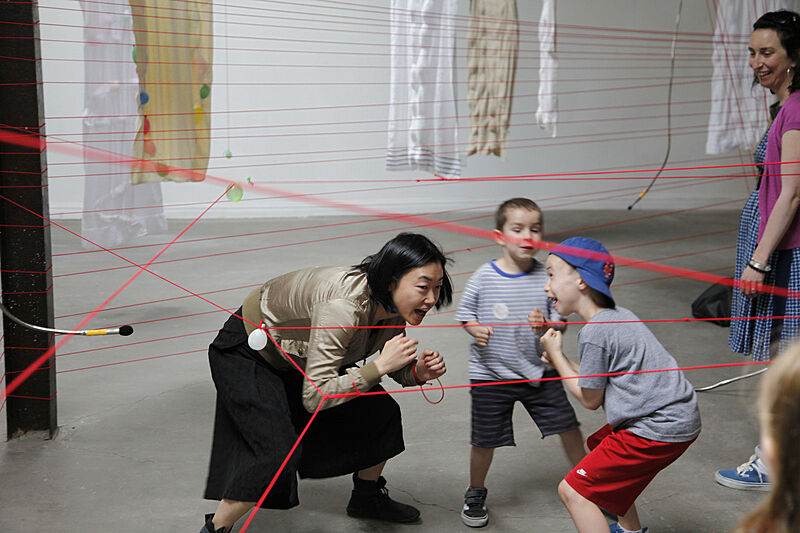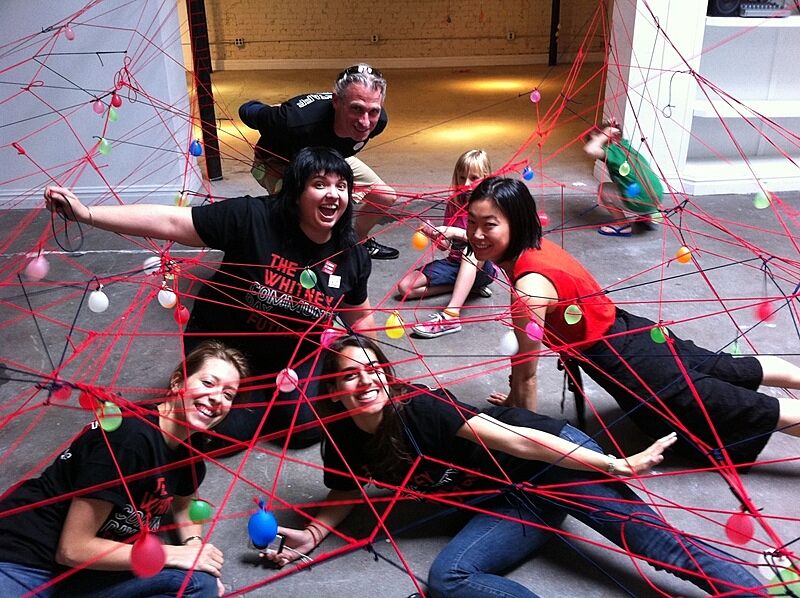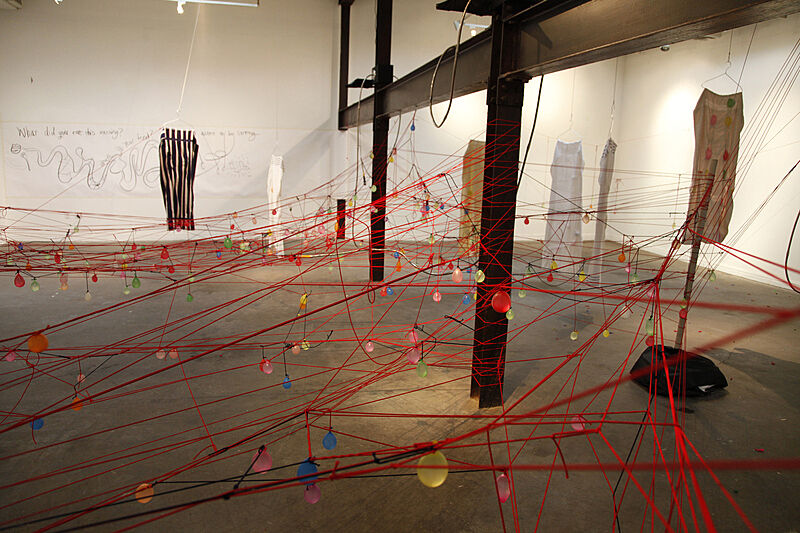Community Day: Aki Sasamoto
Jun 15, 2011
Have you ever boxed, thrown water balloons, or discussed your breakfast with a contemporary artist? Kids and parents had the chance to do all of the above at Aki Sasamoto’s artist project, a part of the Community Day celebrating the groundbreaking of the Whitney’s new building project.
As a participant in 2010: Whitney Biennial, artist Sasamoto presented a hybrid installation-and-performance piece titled Strange Attractors. Incorporating sculpture, movement, video, and sound, Sasamoto arranged and altered found objects within the Whitney’s galleries.
For Community Day, we invited Sasamoto back to transform an empty space at 72 Gansevoort Street into an original, zany installation, designed especially for families. Five Whitney staff members and three volunteers worked alongside the artist to assemble a labyrinth of elastic and wire in just a day and a half. On Saturday, May 21, we opened the installation to the public for kids, parents, and Sasamoto herself to interact and stimulate the senses.
Sasamoto based this project on two seemingly disparate themes: the gastrointestinal tract and the sport of boxing. A zigzagging corridor delineated by five-foot walls of red elastic suggested the insides of an intestine. We gave each kid a cord with a water balloon attached on one end, inviting him or her to tie it across the walkway. Every time a visitor attached a cord, the space became more difficult to navigate, obliging visitors to crawl, climb, and gambol through the maze. Microphones hovered over the network of elastic intermittently, in which Sasamoto asked kids to answer the question “What did you eat for breakfast today?” As the space filled with participants, the artist drew winding intestinal organs onto the butcher paper-covered walls.
The horizontal red elastic lines of the corridor also resembled a boxing ring. After exiting the elastic labyrinth, visitors entered a forest, populated with bath towels hanging from the ceiling, their size and shape reminiscent of the human body. Sasamoto had carefully sewn paths of mesh, following the hand movements of a masseuse, into each towel, in which water balloons sat snugly. Using the balloons as punching bags, Sasamoto taught families the rules and rituals of boxing.
As the space teemed with visitors, you could hear shrieks, giggles, and the watery splats of bursting balloons. With intestines and boxing as the source of her inspiration, Sasamoto triggered activity and ideas about movement and the human body, both inside and out. In the slideshow below, check out images of the space as we install and interact in Sasamoto’s project.
By Desi Gonzalez, Education Assistant

